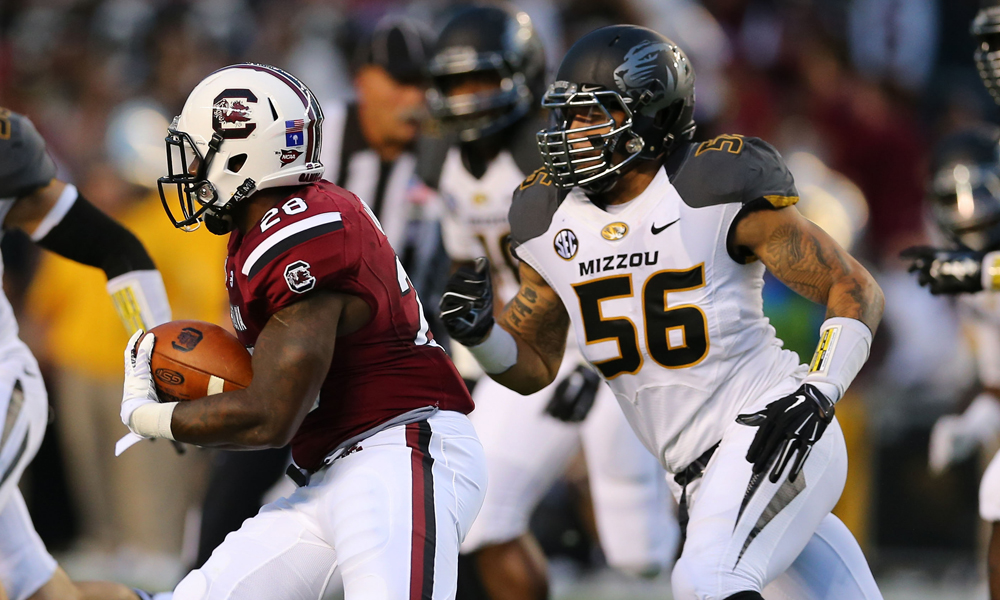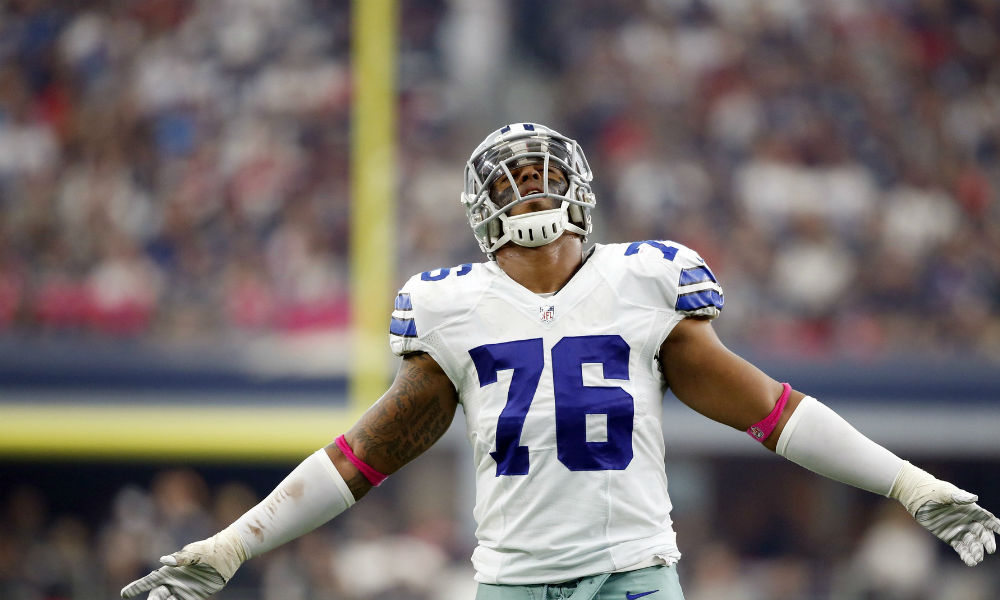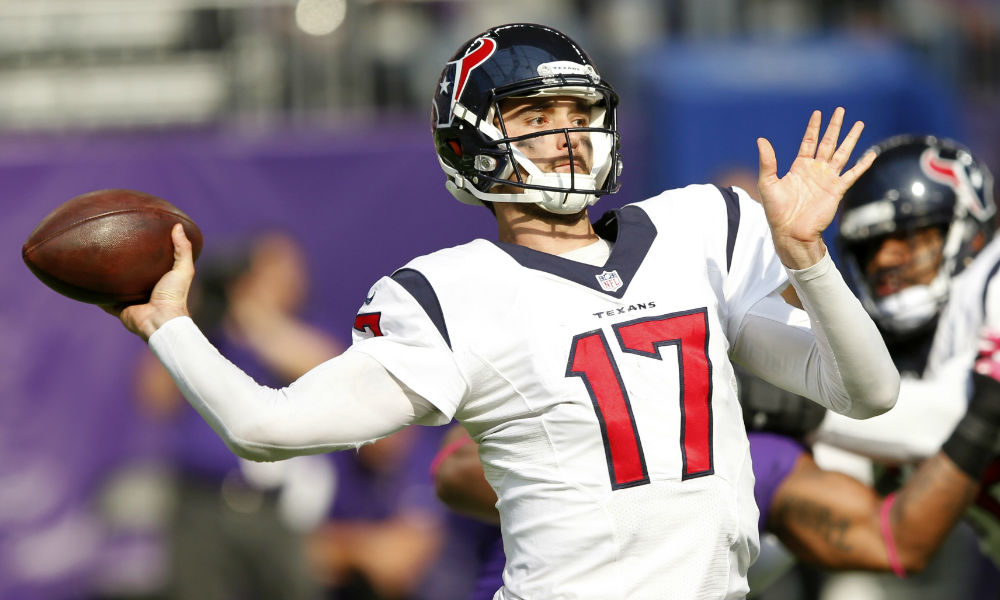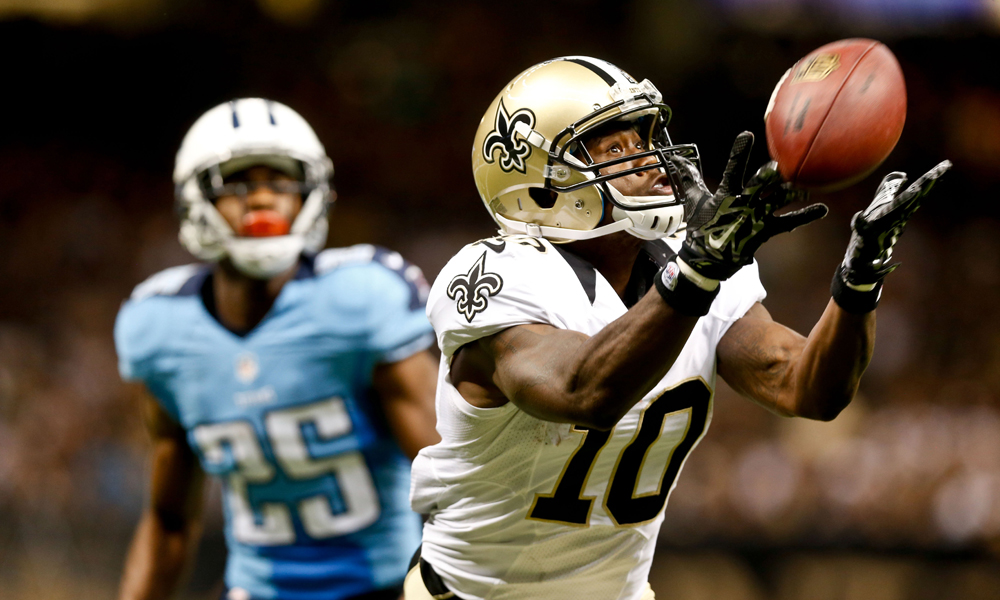News
Missouri’s Shane Ray Could Be the Next Great DE Prospect
Shane Ray has the type of skill set to be an elite pass rusher at the next level as long as he’s utilized correctly.

An athlete’s first step can be a great indicator of the outcome of a variety of events. Derrick Rose’s first-step quickness allows him to blow past defenders en route to an easy layup where most people have no chance to score. Usain Bolt’s first-step quickness is the building block that allowed him to slay world records again and again. Missouri defensive end Shane Ray’s first-step quickness is akin with Rose and Bolt’s because it is the building block that allows him to win in various situations.
Ray is the son of former Minnesota Vikings defensive lineman Wendell Ray and a redshirt junior defensive end for the Missouri Tigers. Until this year, he was a reserve defensive end behind former Co-SEC Player of the Year Michael Sam and Carolina Panthers second-round pick Kony Ealy. Now that Ray has finally been given the chance to shine as a starter, he hasn’t disappointed. Through the first five games of the 2014 college football season, Ray has recorded eight sacks (second in college football), 11.5 tackles for loss (also second) to go with 30 tackles (26 solo and four assisted). Ray’s production may lead some to wonder whether he is the best defensive end to come out of Missouri since Aldon Smith.
The key in evaluating any prospective NFL player is determining what they do and don’t do well and which schemes and philosophies exacerbate those strengths while hiding their weaknesses. Every player has certain aspects of their game that are weak; what separates the good players from the great is that the great are in a scheme that best adheres to their strengths while minimizing their weaknesses.
Ray’s size at 6’3 and 245 pounds is more similar to that of an inside linebacker rather than an every-down defensive end. His size lends to questions about how well he can hold up against the NFL’s mammoth tackles that will likely be two to three inches taller and 60 to 80 pounds heavier than him.
However, Ray has a certain elite attribute that will allow him to combat the length and strength of NFL tackles: first-step quickness.
While Ray doesn’t have elite size, he does have elite athleticism. He was reportedly clocked at 4.44 seconds in the 40-yard dash during this past offseason. Ray’s first-step quickness is unmatched among draft-eligible defensive ends in college football. That first step allows him to win in a variety of ways, as he can use it to bend around the edge or to set up the opposing lineman as he darts inside. Ray’s unrivaled quickness and burst allow him to get to the quarterback quicker than almost any other defensive end in recent memory. In fact, Ray’s eight sacks have taken an average of 3.31 seconds from snap to sack, which would put him second (behind No. 1 pick Jadeveon Clowney) among the elite edge rushers taken in the 2013 NFL Draft. Five out of Ray’s eight sacks are considered to be speed sacks (snap to sack in less than 3.5 seconds), while the other three are considered average sacks (snap to sack in less than five seconds, but longer than 3.5 seconds).
Ray’s quickness and burst was epitomized in his fourth quarter sack against the University of Central Florida. On this play, Ray was lined up at right defensive end on the outside shoulder of UCF’s left tackle. At the snap, Ray burst up-field so quickly that it caused the tackle to have to turn his body perpendicular to the line of scrimmage in hope of catching up to Ray’s initial movement. The tackle finally engaged the inside of Ray’s body five yards into their backfield. Once Ray felt the contact, he sunk his hips and leaned his body at an angle toward the tackle while basing off his outside foot. This allowed him to adequately absorb the contact from the tackle so that it didn’t knock him off his route to the quarterback. Ray’s ankle flexibility allowed him to push off the outside first and quickly close on the quarterback’s blind side. He hit the quarterback in his back and used his outside hand to knock the ball away, which resulted in a sack-fumble for Ray.
That whole sequence of events only took 1.8 seconds, which paints the picture of just how quick and explosive Ray really is.
Ray hasn’t only use his quickness to get around on the edge of offensive tackles; he also uses the threat of his initial burst to set up his fantastic inside move. Ray’s favorite (and maybe only) pass-rush move is the club and rip technique. Ray usually sets this up by taking a hard and quick outside step toward the opposing lineman’s outside shoulder. Since Ray is so quick, the lineman has to react to the outside step or he risks getting beat badly around the corner. Once the lineman reacts, Ray bursts inside the lineman’s inside gap. When the linemen recovers and tries to engage, Ray hits the linemen’s inside shoulder with a thunderous club with his inside hand followed by a violent rip with his outside hand on the lineman’s inside shoulder. This allows Ray to get past the block into the backfield, where he utilizes his great change of direction skills and closing speed to get to and sack the quarterback. He has shown the ability to use this from the right defensive end spot along with the three-technique defensive tackle position on multiple occasions as four of Ray’s eight sacks have come when he has employed the club to rip move.
Another way Ray utilizes his elite first-step quickness is in backside pursuit versus the run. Numerous times in the first five games of this year, Ray has made incredible plays against runs that are directed away from him. While his quickness allows him to close on the ball carrier quickly, Ray also has incredible discipline in his pursuit. He keeps his shoulders parallel to the line of scrimmage, which increases the surface area that Ray has to contact the ball carrier. When a defender has their shoulders perpendicular to the line of scrimmage, it will likely lead to yards after contact because there is no object to immediately stop the ball carrier from continuing their forward progress.
Even though Ray’s amazing quickness allows him to succeed in a variety of different areas, he is not without weaknesses. He doesn’t do a great job of utilizing leverage when engaged at the point of attack, which causes his upper body to absorb much of the contact instead of creating a good base with knee bend that allows him to bring his hips through the contact and be much more balanced when engaged. Moreover, he struggles against double teams because he doesn’t have an acute understanding of leverage. Ray is also a very stubborn pass rusher. Before each play, Ray appears to have it made up in his mind what pass rush he is going to use. This leads to him not setting up his pass rushes adequately enough from time to time. In the NFL, he will have to do a better job of setting up each pass rush move and if the first one doesn’t work, he needs to be able to quickly employ an effective counter move. Another aspect Ray must improve in going forward is his pass-rush repertoire. At the moment, the only moves Ray uses effectively are a strict speed rush, rip move or club and rip combo move. It would be good to see Ray develop one or two more moves (like a spin or swim move) along with learning how to convert his speed into power.
The question remains: how does Ray project to the NFL?
It is easy to focus on Ray’s weakness, and one may come away with the belief that he is a tweener who doesn’t have the size, repertoire or position to survive in the NFL. However, if you look at Ray’s strengths and where he wins, one would see a player with a phenomenal physical skill set to work with and develop. Most players with Ray’s skill set are strict speed rushers who attempt to get around the edge at all cost. That is not the case with Ray though. He does have the ability to get around the edge, but he also has great ability to use that speed dart inside and create disruption in opposing teams’ backfields.
Because of his size, Ray will likely be a situational pass rusher initially in his NFL career. However, once he gets acquainted with an NFL weight room and become more knowledgeable about the nuances of leverage, Ray could develop into an unique edge rusher who averages 10 to 14 sacks a season as a 4-3 defensive end, a 3-4 outside linebacker or even as a LEO. His best fit will be with a team that employs an aggressive one-gap scheme that allows him to get up-field as much as possible.
In a league that is dominated by elite quarterbacks, teams need players who can disrupt their timing and flow. If a quarterback hunter is what you need, then Ray is the person you are looking for.
Projection: Top-25
News
Buccaneers admit mistake, boot Aguayo
Source: Mike Florio of ProFootballTalk
Powered by WPeMatico
News
Did Bucs put too much pressure on Aguayo?
Source: Mike Florio of ProFootballTalk
Powered by WPeMatico
News
Broncos holding their breath on Derek Wolfe
Source: Mike Florio of ProFootballTalk
Powered by WPeMatico




